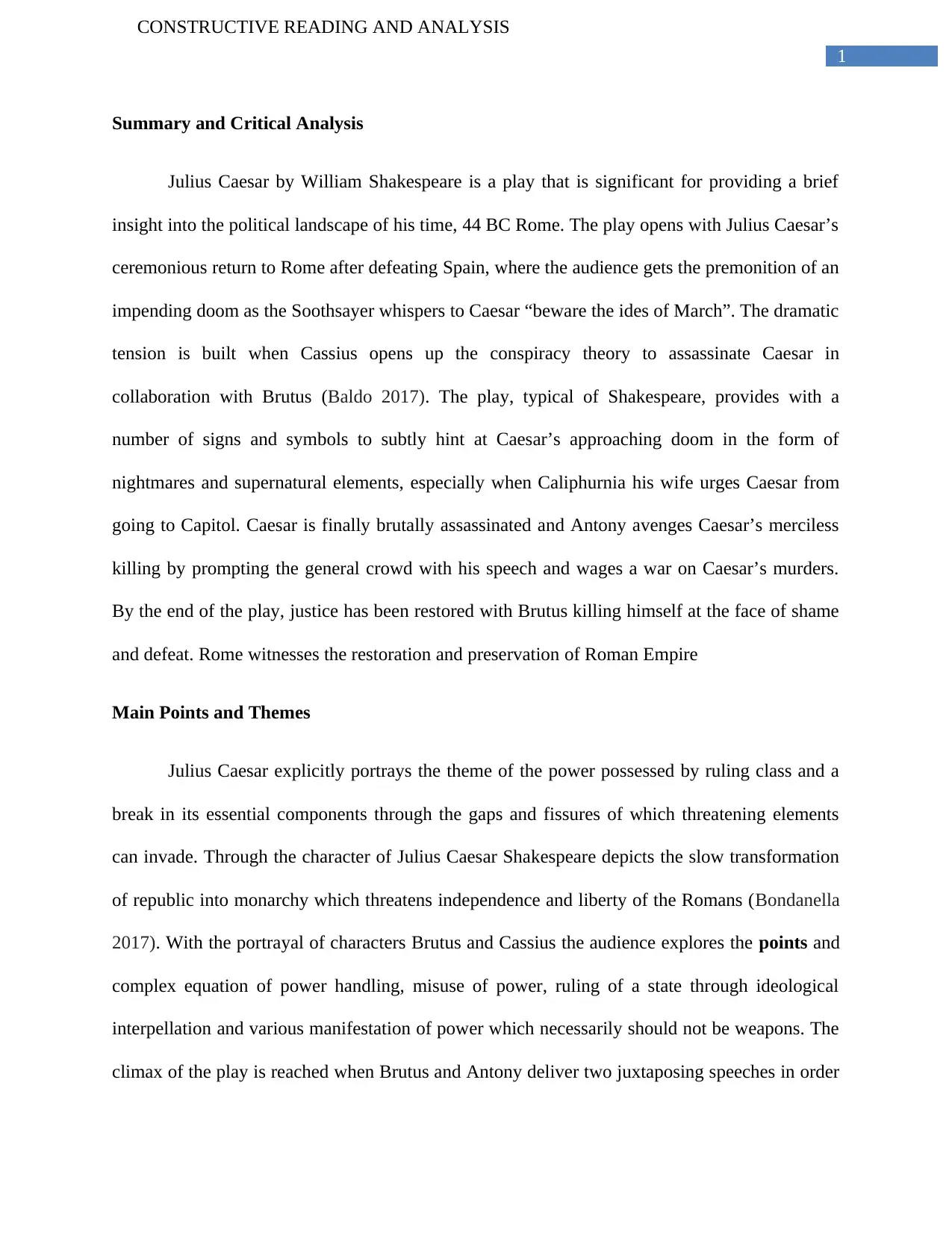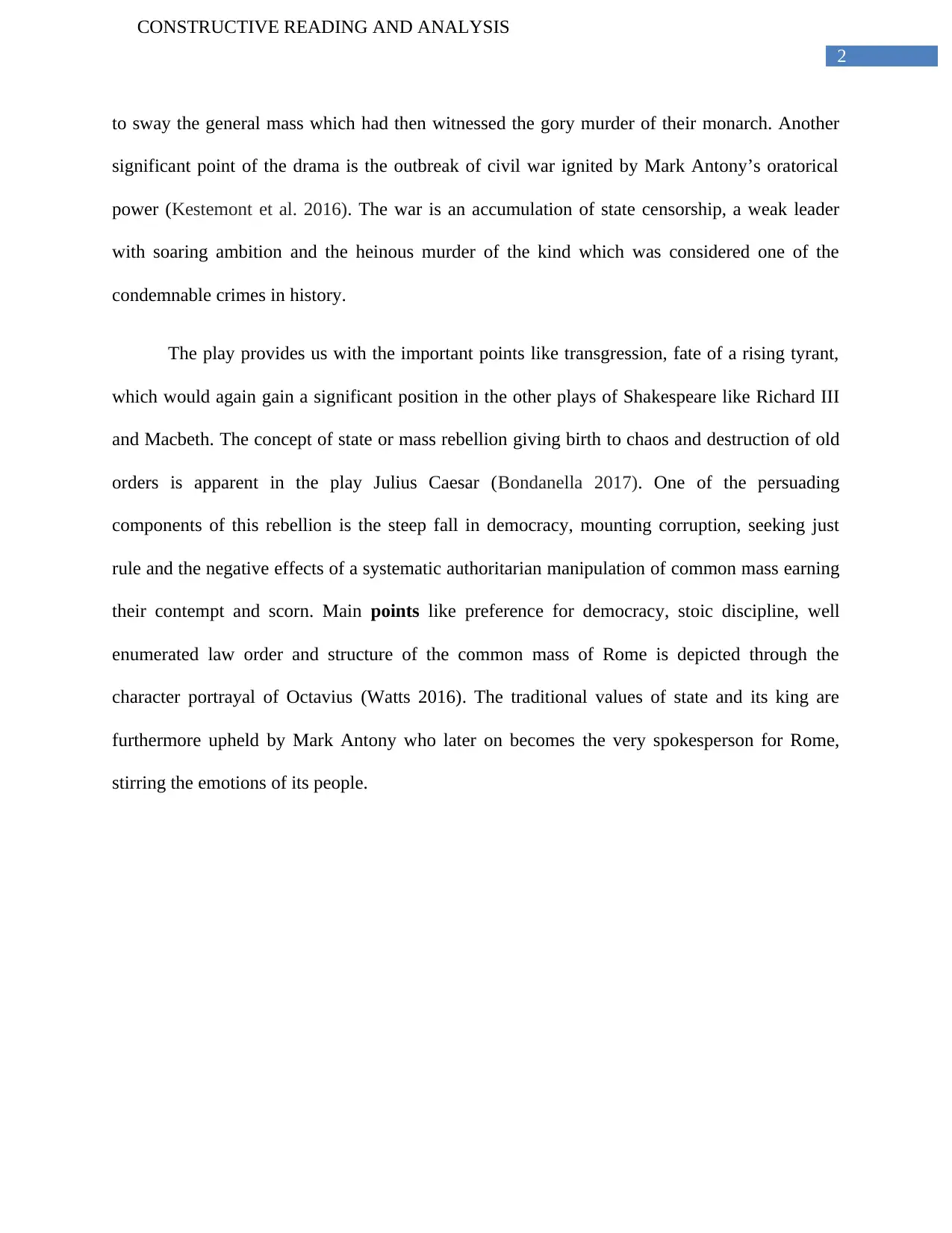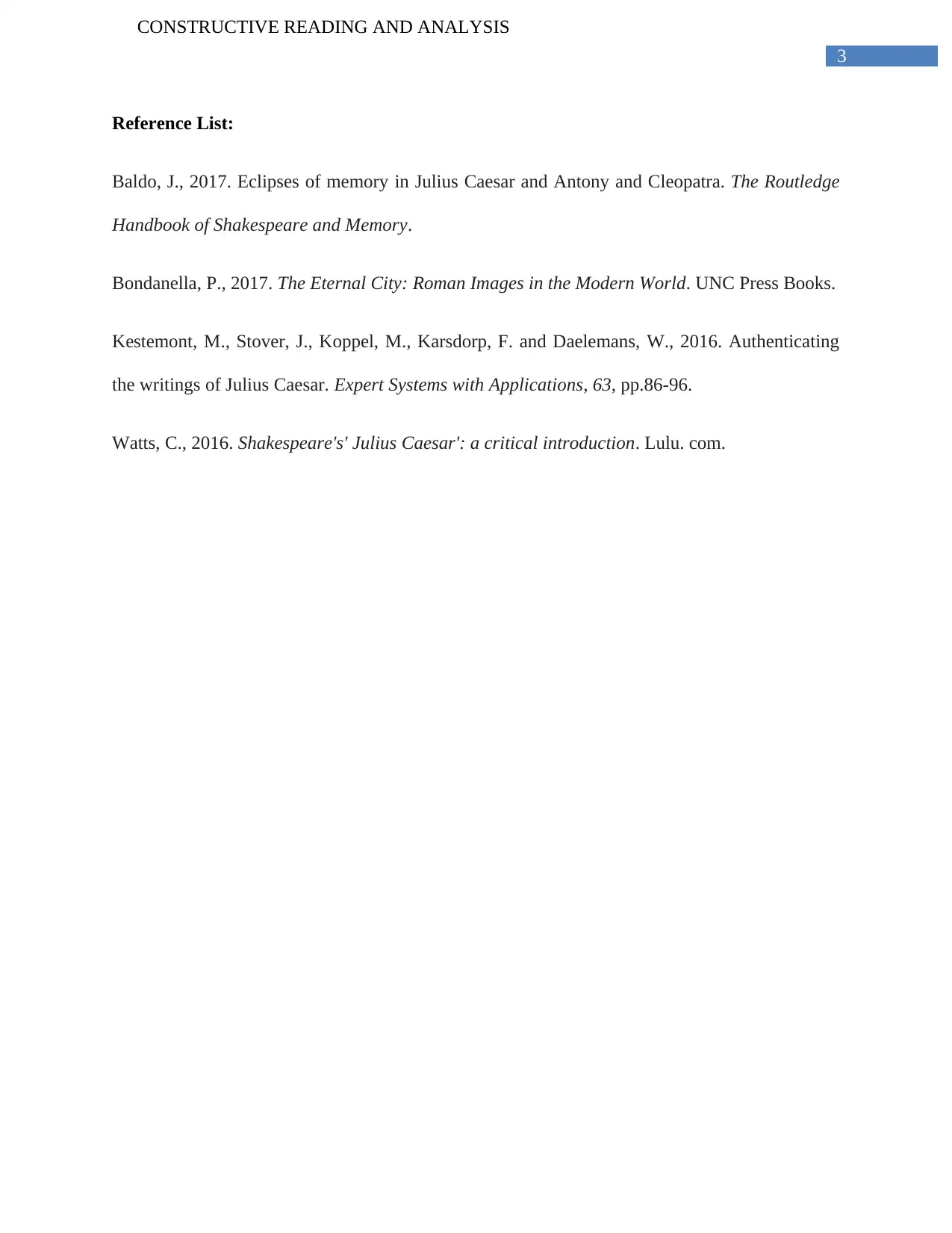Critical Analysis of Shakespeare's Julius Caesar Play
VerifiedAdded on 2021/04/21
|4
|711
|269
Essay
AI Summary
This essay offers a critical analysis of William Shakespeare's play, Julius Caesar, examining its significance in portraying the political landscape of 44 BC Rome. The analysis delves into key themes such as power, the transformation from republic to monarchy, and the consequences of civil war, as exemplified through the characters of Julius Caesar, Brutus, and Antony. The essay explores the use of signs, symbols, and dramatic tension to foreshadow events, including Caesar's assassination and its aftermath. It also highlights the contrasting speeches of Brutus and Antony and the ensuing conflict. The essay references scholarly sources to support its arguments, providing a comprehensive overview of the play's central ideas, including state rebellion, democracy, and the importance of leadership and traditional values. The essay concludes with a discussion of the restoration of the Roman Empire and the play's lasting impact.
1 out of 4







![[object Object]](/_next/static/media/star-bottom.7253800d.svg)